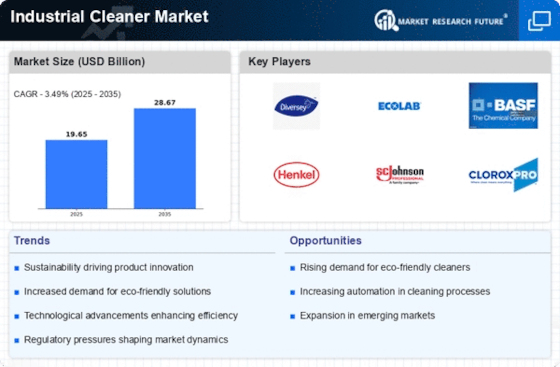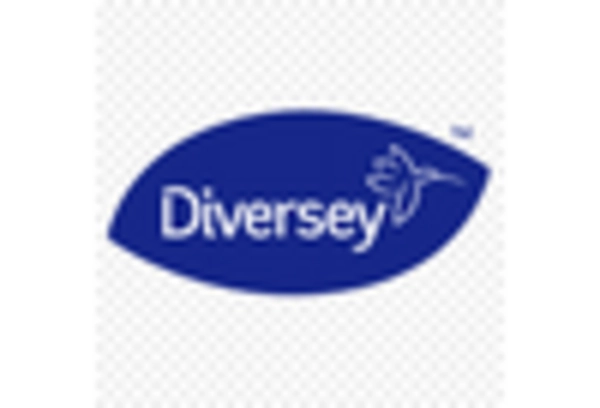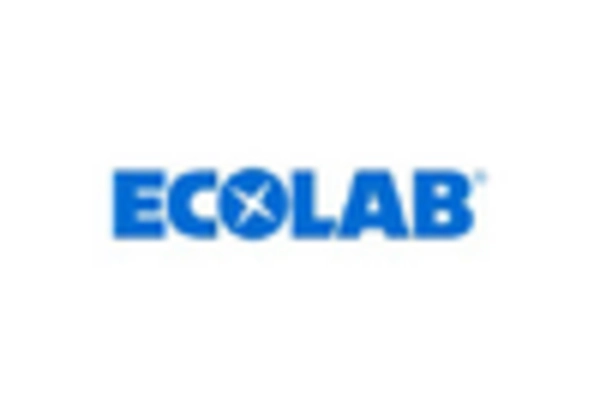The Industrial Cleaner Market is currently characterized by a dynamic competitive landscape, driven by increasing demand for effective cleaning solutions across various sectors, including manufacturing, healthcare, and food processing. Key players such as Ecolab Inc. (US), Diversey Holdings, Ltd. (US), and BASF SE (DE) are strategically positioning themselves through innovation and sustainability initiatives. Ecolab Inc. (US) focuses on developing advanced cleaning technologies that enhance efficiency while minimizing environmental impact. Meanwhile, Diversey Holdings, Ltd. (US) emphasizes digital transformation, integrating smart technologies into their cleaning solutions to optimize operational performance. These strategies collectively shape a competitive environment that prioritizes not only product efficacy but also sustainability and technological advancement.
In terms of business tactics, companies are increasingly localizing manufacturing to reduce supply chain vulnerabilities and enhance responsiveness to regional market demands. The Industrial Cleaner Market appears moderately fragmented, with a mix of large multinational corporations and smaller niche players. The collective influence of key players, such as Henkel AG & Co. KGaA (DE) and SC Johnson Professional (US), contributes to a competitive structure that fosters innovation and drives market growth.
In August 2025, Ecolab Inc. (US) announced a partnership with a leading technology firm to develop AI-driven cleaning solutions aimed at improving operational efficiency in industrial settings. This strategic move is likely to enhance Ecolab's product offerings, positioning the company as a leader in the integration of artificial intelligence within the cleaning sector. The collaboration underscores the growing trend of leveraging technology to meet evolving customer needs and improve service delivery.
In September 2025, Diversey Holdings, Ltd. (US) launched a new line of eco-friendly cleaning products designed specifically for the food service industry. This initiative not only aligns with the increasing consumer demand for sustainable products but also reinforces Diversey's commitment to environmental stewardship. By focusing on sustainability, Diversey is likely to attract a broader customer base while differentiating itself from competitors.
In October 2025, BASF SE (DE) unveiled a new manufacturing facility in North America dedicated to producing biodegradable cleaning agents. This strategic investment reflects BASF's commitment to sustainability and innovation, positioning the company to capitalize on the growing market for environmentally friendly cleaning solutions. The establishment of this facility may enhance BASF's supply chain efficiency and responsiveness to market demands, further solidifying its competitive edge.
As of October 2025, the Industrial Cleaner Market is witnessing significant trends such as digitalization, sustainability, and the integration of artificial intelligence. Strategic alliances among key players are shaping the competitive landscape, fostering innovation and collaboration. The shift from price-based competition to a focus on technological advancement and supply chain reliability is becoming increasingly evident. Companies that prioritize innovation and sustainability are likely to emerge as leaders in this evolving market.

















Leave a Comment